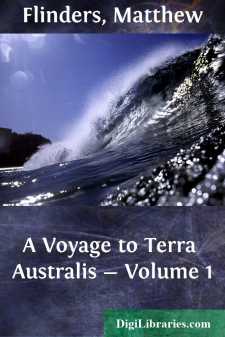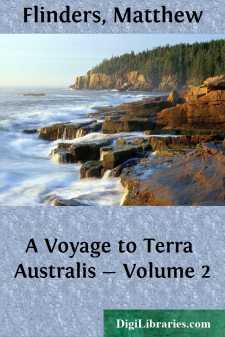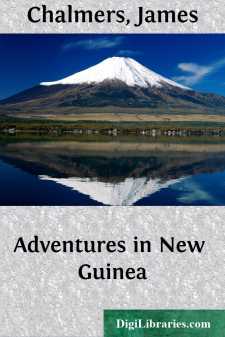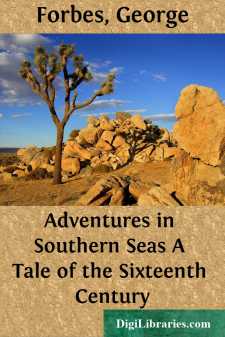Travel
- Africa 29
- Alaska 3
- Asia 46
- Australia & Oceania
- Canada 31
- Caribbean & West Indies 5
- Central America 1
- Europe 151
- General 39
- Maps & Road Atlases 1
- Mexico 10
- Middle East 18
- Polar Regions 7
- Reference 11
- Restaurants 1
- Russia 6
- South America 16
- United States 71
Australia & Oceania Books
Sort by:
by:
Samuel Smiles
CHAPTER I. DOWN CHANNEL. At Gravesend—Taking in Stores—First Night on Board—"The Anchor's Up"—Off Brighton—Change of Wind—Gale in the Channel—The Abandoned Ship—The Eddystone—Plymouth Harbour—Departure from England. 20th February: At Gravesend.—My last farewells are over, my last adieus are waved to friends on shore, and I am alone on board the ship...
more...
by:
Ellen Clacy
Chapter I. It may be deemed presumptuous that one of my age and sex should venture to give to the public an account of personal adventures in a land which has so often been descanted upon by other and abler pens; but when I reflect on the many mothers, wives, and sisters in England, whose hearts are ever longing for information respecting the dangers and privations to which their relatives at the...
more...
by:
Matthew Flinders
PREFACE. The publication in 1814 of a voyage commenced in 1801, and of which all the essential parts were concluded within three years, requires some explanation. Shipwreck and a long imprisonment prevented my arrival in England until the latter end of 1810; much had then been done to forward the account, and the charts in particular were nearly prepared for the engraver; but it was desirable that the...
more...
by:
Matthew Flinders
CHAPTER I. Departure from Port Jackson, with the Lady Nelson.Examination of various parts of the East Coast, from thence to Sandy Cape.Break-sea Spit.Anchorage in Hervey's Bay, where the Lady Nelson joins after a separation.Some account of the inhabitants.Variations of the compass.Run to Bustard Bay.Port Curtis discovered, and examined.Some account of the surrounding country.Arrival in Keppel Bay,...
more...
by:
James Chalmers
INTRODUCTION. Public attention has been repeatedly and prominently directed to New Guinea during the last few months. The name often appears in our newspapers and missionary reports, and bids fair to take a somewhat prominent place in our blue-books. Yet very few general readers possess accurate information about the island itself, about the work of English missionaries there, or about the part New...
more...
by:
George Forbes
CHAPTER I I FALL INTO CAPTIVITY Let those who read this narrative doubt not its veracity. There be much in Nature that we wot not of, and many strange countries to explore. The monsters who roamed the earth in ancient times, as their fossil bones attest, are still to be seen in those regions hitherto unvisited by white men, and in the fathomless depths of uncharted seas leviathans find a home. Peter...
more...
PREFACE. A few words by way of Preface are requisite, in order that the objects of the present Work may be stated to the reader, and that he may also be made acquainted with the sources whence the information here communicated is derived, and from consulting which he may still further inform himself concerning Australia. The aim of the writer of the following pages has been,—while furnishing a...
more...
IN a former narrative, published in the preceding volume of the ILLUSTRATED TRAVELS, I gave an account of a terrible cyclone which visited the north-eastern coast of Queensland in the autumn of 1866, nearly destroying the small settlements of Cardwell and Townsville, and doing an infinity of damage by uprooting heavy timber, blocking up the bush roads, etc. Amongst other calamities attendant on this...
more...
CHAPTER I. A "NEW-CHUM'S" INTRODUCTION. Three months on board ship seems a long while to look forward to, yet it is but a short time to look back upon. Emigrants, being for the most part drawn from among dry-land-living populations, are apt to be daunted by the idea of a long voyage. People would be more ready, perhaps, to contemplate becoming colonists, were it not for that dreaded...
more...
by:
Charles Sturt
The Australian continent is not distinguished, as are many other continents of equal and even of less extent, by any prominent geographical feature. Its mountains seldom exceed four thousand feet in elevation, nor do any of its rivers, whether falling internally or externally, not even the Murray, bear any proportion to the size of the continent itself. There is no reason, however, why rivers of...
more...











